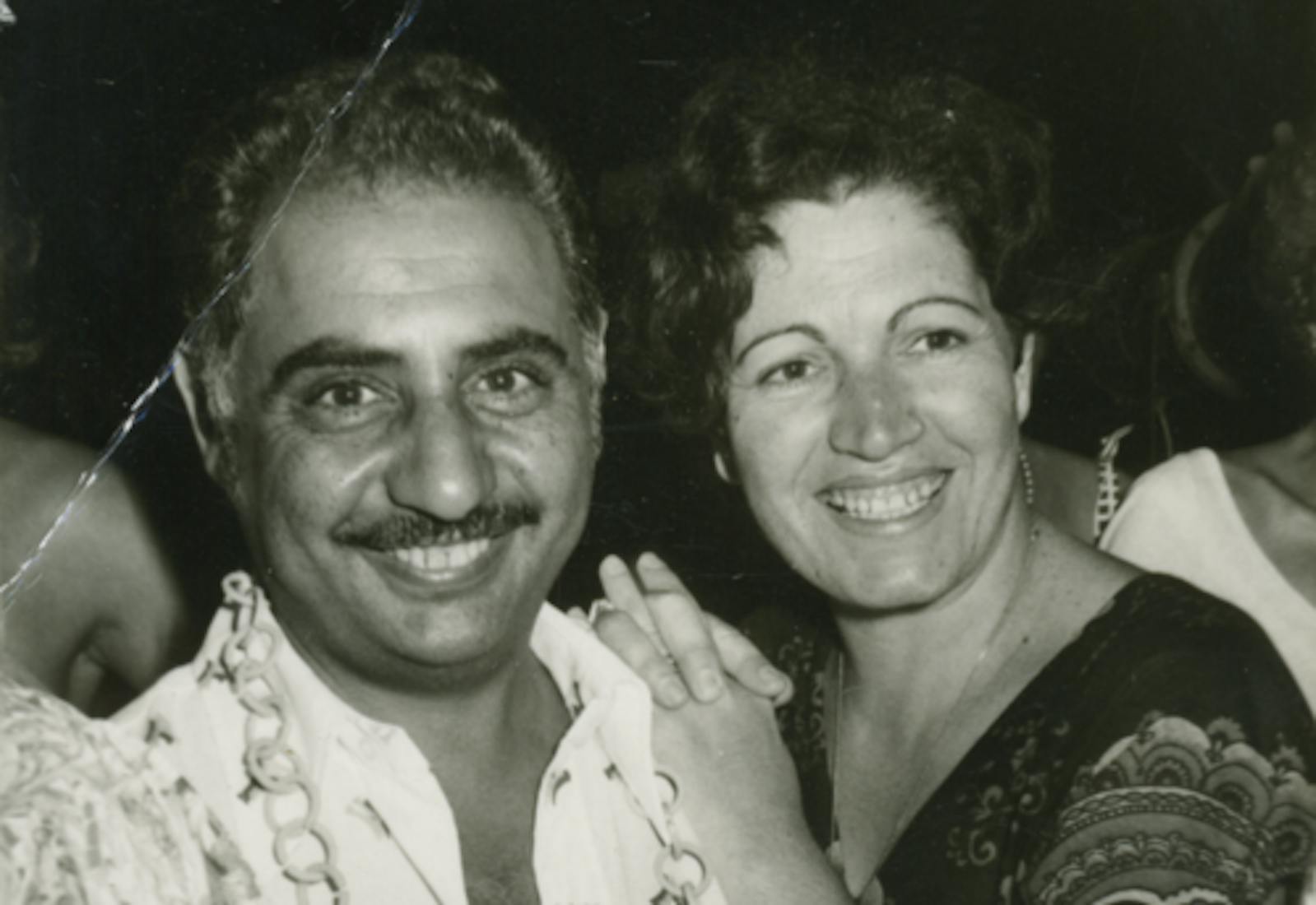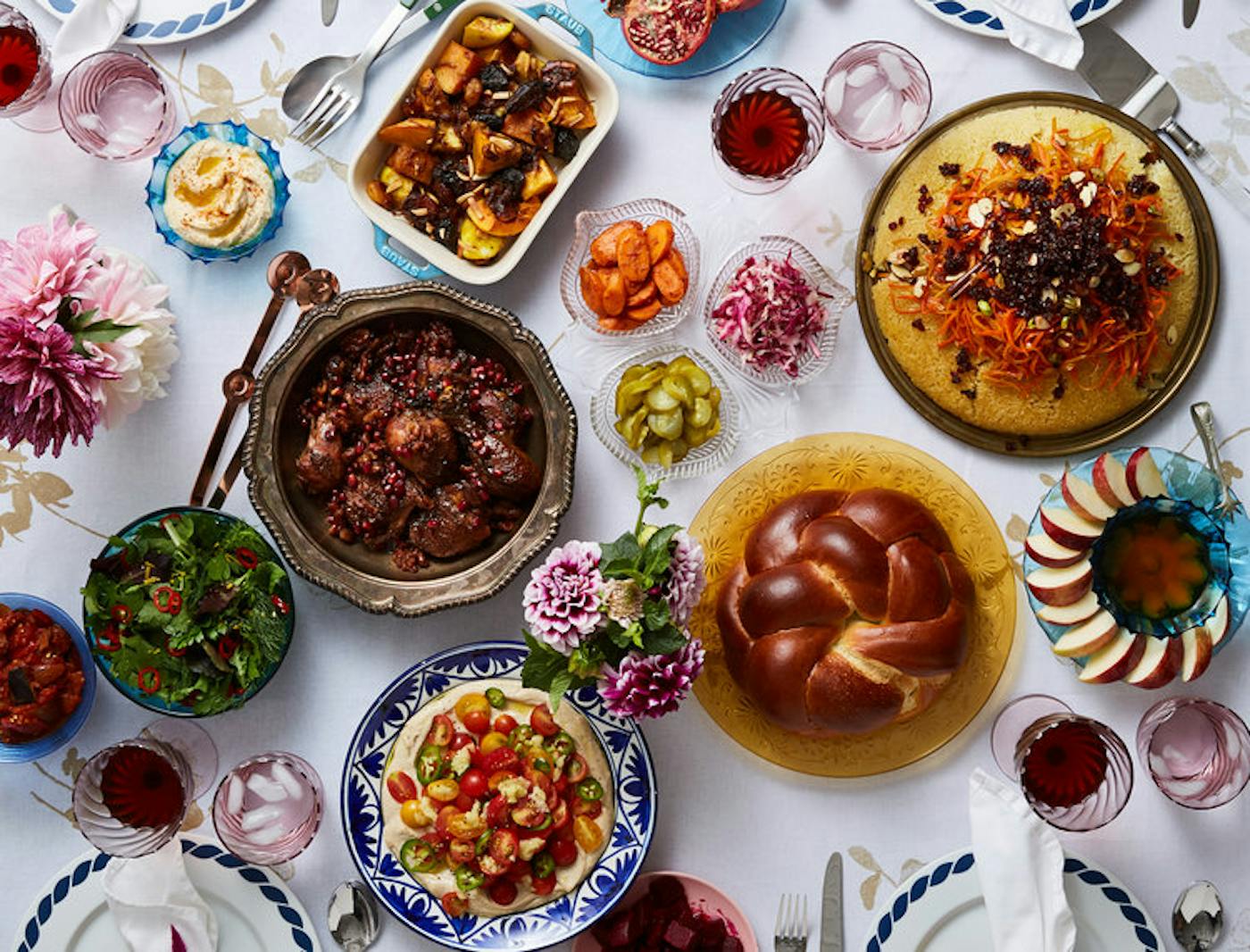Shared by Einat Admony

Chef and cookbook author Einat Admony and her mother Ziona have always maintained open kitchens, not only welcoming friends and family, but influences from other kitchens and parts of the world. Growing up in a third floor apartment in the largely Ashkenazi and religious town of B’nei Brak, just inland of Tel Aviv, Einat says the doors between her family’s home and those of her Moroccan neighbor Tovah were always open. “I would go in and take something from the fridge,” Einat says, as if she were in her own home. “This is how we grew up.” Jumping back and forth between kitchens helped Einat learn the smells, spices, and flavors of dishes from other Jewish communities that found new homes in Israel.
Ziona’s cooking started taking in unfamiliar flavors and dishes when she was very young. When her family moved from Kerman, Iran to modern-day Israel in the 1940s, they settled near the Jourdanian border in a camp for immigrants. It wasn’t ideal for children, so Ziona was moved to the interior of the country to Ramat Gan where she lived with an Iraqi family throughout her teen years.
As an adult, when she married Einat’s father Menashe, a native Israeli whose family emigrated from Yemen she learned recipes from her mother-in-law and later more Yemenite recipes from the rabbi’s wife at the synagogue where Menashe prayed. Ziona’s cooking influences weren’t limited to the Levant and the north rim of Africa. Living in an Ashkenazi town, she started to make gefilte fish and noodle kugel, achieving a crust that Einat says no one can match.
This approach to an open kitchen is a hallmark of Israeli home cooking and Einat’s new book, Shuk: From Market to Table the Heart of Israeli Home Cooking. As her co-author Janna Gur writes in the book, “the cuisines are in a constant state of interplay.”
Einat learned this in the kitchen from the time she was little — and later from extensive traveling. Before Rosh Hashanah, she spent hours helping her mother prepare for dinners of 20 or 30, inspecting grains of rice for one of her mother’s many rice dishes, checking that no stones were left in the nigella seeds from the harvest, and peeling and cleaning countless pomegranates, making sure to get rid of everything but the ruby arles. At the time, Einat hated the work, but today she’s grateful for it, calling it an education. “It became the engine of everything,” she explains.
The pomegranates, which are traditional for the holiday, were cooked down into a rich and thick confiture to be used in the Persian dish fesenjan, one of Ziona’s best known recipes in the family. Though to the family, it’s known as of shachor, or black chicken, in Hebrew. The extra confiture was carefully tucked away to last for long after the holiday.
The fesenjan was often joined by Yemenite soup made with beef and white beans in honor of her father’s roots. And her aunt or doda (the Hebrew word for aunt) Hana’s tomato salad made with chili peppers, a small pinch of sugar, and handfuls of herbs, which she would bring with her. And there was always lamb, which Menashe would pick out at a moshav and have slaughtered — much to Einat’s horror as a child. The head was served — some families serve a sheep or fish’s head — a tradition that symbolizes the hope that the family will be the head, instead of the tail, in the year to come.
At Ziona’s table, dishes were imbued with meaning and blessings from the holiday, much like they are at Einat’s home. To celebrate the season and holiday, she uses a first of the season fruit (or a fruit new to her) to inspire dishes and to make the shehecheyanu blessing that’s customary for the holiday, honoring the new and unusual. “I like the idea of symbols and blessings in dishes,” Einat says.
We asked her to share a complete menu for a Rosh Hashanah feast. True to her and Ziona’s style, it brings in influences from Persian, Yemeni, and Moroccan kitchens, with touches from her New York home.
